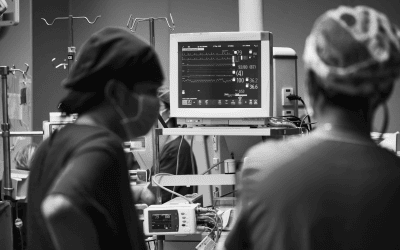The importance of good blood pressure waveform morphology In our daily practice in anesthesia and intensive care, we continuously use monitors that reproduce the blood pressure waveform and measure its values, reporting systolic, diastolic, and mean blood pressure...
hemodynamic monitoring
Advanced Hemodynamic Monitoring and Cardiac Output Assessment in Pediatric Patients
Hemodynamic monitoring is essential in pediatric perioperative and critical care medicine, guiding adequate tissue perfusion and oxygen delivery in the most vulnerable patients. Although basic parameters in pediatric anesthesia such as heart rate, blood...
The Benefits of Cardiac Output Monitoring for ICU Nurses
Nurses are the first clinical aid at the bedside, monitoring and responding to changes in patient conditions. Providing nurses with tools to make more informed decisions can significantly enhance patient care as early detection of preventable outcomes is crucial for...
Perioperative hemodynamic management made easy, affordable, and green
Hemodynamic instability frequently manifests during the perioperative course of high-risk surgical patients. This instability arises primarily during surgery due to the influence of anesthetic agents on vascular tone, compounded by surgical bleeding. Post-surgery,...
Why CO?
In acute care areas, where patients can be hemodynamically unstable (or at risk of instability), clinicians aim to optimize perfusion in order to avoid organ dysfunction, multi-organ failure, or even death. These areas refer to critical care units, perioperative areas...
Volume response in septic shock. Case study presented by Dr. Sergi Tormo Ferrándiz
Sepsis is defined as a systemic inflammatory response to infection. This scenario is encountered daily in all healthcare centres with a rate of 10 per 1,000 hospitalised patients. This condition is of great importance as mortality is observed in 20% of sepsis...
Fluid therapy: challenges in the septic patient
The administration of fluids is essential for the survival of the critical patient in shock, regardless of the cause of the shock. This supply occurs to a greater extent during the first hours and days of stay, since it is during these that resuscitation of the...
5 key parameters to understand the hemodynamic response of a septic patient
The first definition of sepsis was made in 1980 and was based on the concept of Systemic Inflammatory Response (SIRS). Despite advances and new definitions over the years, it was then that the basis for the management of the septic patient was established. Sepsis is...
3 keys to choosing the best hemodynamic monitor for our patients
Hemodynamic monitoring provides us with information on cardiovascular performance and has therefore become a fundamental tool in the diagnostic approach and therapeutic orientation. More and more devices are becoming available that allow us to carry out advanced...









